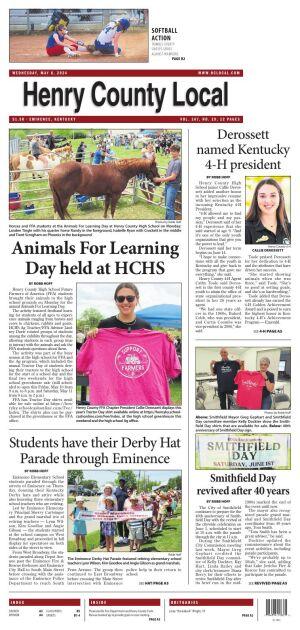April 8, 2024
On Easter Sunday, Donna and I were pleased to see Ronda Dees back in church after an absence of three Sundays due to a major health issue. Before leaving worship, I expressed my joy at seeing her and encouraged her to take care of herself. While we spoke, she took my hand in hers. Suddenly, I found myself transported fifty-plus years back in time.
As Ronda held my hand, she was moving her thumb back and forth across the back of my hand. Her action brought back a memory that gave me joy. In the 1970s, my grandma Knapp was in the hospital recovering from surgery. I stood beside her bed as she slept. On the other side of her bed, my grandpa sat, holding her hand, and gently rubbing his thumb across the back of her hand. I cherish that moment for what it revealed about my grandparents’ love for each other.
Ronda’s simple, and likely unconscious, action opened the door to a cherished moment which remains as potent today as it was then. For a moment in time, I saw my grandparents as clearly as I did that day so long ago and celebrated again their love for one another.
Two of Jesus’ disciples experienced something similar on the Sunday following the crucifixion of Jesus. The disciples, having failed to understand all that Jesus had taught them, were devastated by his cruel death on the cross and fearful regarding their own safety. They had given up so much to follow him and, so it seemed, all was now lost.
In last month’s column, I attempted to say that the story of Easter matters, that without Jesus’ resurrection, the Christian faith would not exist. Had there been no Easter, I would not have spent my adult life as a pastor. The Easter story matters.
For there to be an Easter story, there had to be a risen Jesus and people who had seen Jesus both before and after his crucifixion and burial. My favorite story of the risen Jesus’ being seen and known is found in Luke’s gospel, chapter 24, verses 13-35.
According to Luke’s story, two who had chosen to follow Jesus were on their way from Jerusalem to Emmaus where they lived. They, like many others, had been in Jerusalem for the Passover festival, a festival that for some had lost its festive nature when Jesus was arrested, crucified, and buried.
The two men who were walking toward Emmaus, were joined by a third man, a stranger. The reader is told that the third man was Jesus; but to them, he was just a stranger. Luke wrote that “their eyes were kept from recognizing him.” I’ve always believed they didn’t recognize Jesus because they were looking at the world through the lenses of their grief and disappointment. Why should their experience be different from mine, or yours? When I am emotionally distraught and/or grieving, I’m sure I miss seeing much that is around me.
Jesus saw them and recognized their distress, grief, and disappointment. Seeing their obvious sadness, Jesus drew them into conversation by asking what they had been discussing as they walked along.
Since Jesus was traveling the same road in the same direction, the men assumed he, like they, had been in Jerusalem. The men were astounded that anyone could have been in Jerusalem and not known what had occurred there in the past few days. Cleopas, the only one whose name we know, gave the stranger a summary of what had happened, including there being reports that Jesus’ body was not in the tomb, but no one had seen him.
Jesus responded, “. . . ‘Oh, how foolish you are and how slow of heart to believe all that the prophets have declared! Was it not necessary that the Messiah should suffer these things and then enter into his glory?’ Then beginning with Moses and all the prophets, he interpreted to them the things about himself in all the scriptures.”
I can imagine the two disciples nodding their heads in affirmation of the scriptures Jesus was sharing. Perhaps they were beginning to recall Jesus’ having said similar things to them; but they still did not know who the stranger was.
“As they came near the village to which they were going, … [the stranger] walked ahead as if he were going on. But they urged him strongly, saying, ‘Stay with us, because it is almost evening, and the day is now nearly over.’ ” It was an offer of hospitality they would forever remember.
When the three of them sat down for supper, Jesus took the bread, blessed it, and gave it to them. They had seen that before, most recently at the last meal Jesus had shared with the disciples before his arrest. The way he took the bread . . . the way he blessed it . . . the way he offered it to them opened their eyes, and then they knew—knew he was risen and alive.
Long before I fully understood it, the service of Communion (The Lord’s Supper) was holy and special to me. The simple acts of receiving broken bread and drinking from the cup remind me that Jesus is risen and alive; and because he lives, I, too, live now and forever in his love and grace.
We often look for God in the miraculous and spectacular. We might do well to look to the more common signs—the touch of a friend’s hand … a loaf of bread broken and a cup extended to us.
















